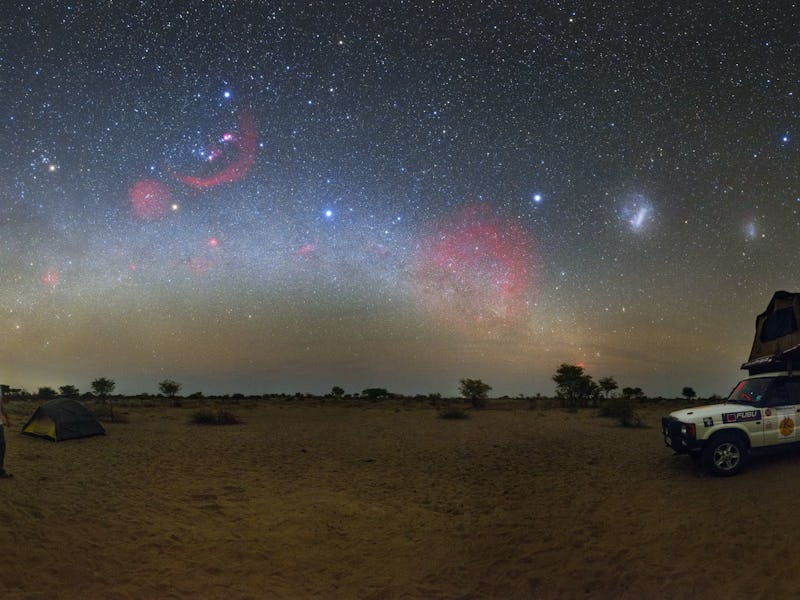City dwellers are lucky to spot a star or two when they look up at the night sky. That’s because light pollution from traffic and street lights compromise our ability to see the night sky.
Disheartened Czech photographer Petr Horálek went to the darkest place he could think of to photograph the night sky in all its glory: the Kalahari Desert in Southern Africa.
“My goal was to show the people the beauty of the night skies, which we have so irresponsibly removed with light-pollution,” Horálek tells Inverse. “So, I’ve traveled to far away places where the skies are still naturally dark, to photograph them.”
At first glance, the image might seem like a single shot. But actually, Horálek made the image with a composite of 43 single photographs taken in 15 second-long exposures; this allows the camera to capture the illumination of the sky.
The photograph shows the Milky Way relative to Earth’s location, capturing the hydrogen emissions from nearby nebulae. In the annotated photo below, the Angelfish, Orion, California, Rosette, Gum, and Carina nebulae are all clearly identified.
Nebulae are the result of supernovae explosions, or star death. Cosmic dust and gas gets flung across the universe, forming a giant shell-like structure full of ionized particles that spawn new star growth.
You can also see some of the brighter stars in our galaxy such as Rigel, Betelgeuse, Sirius, Canopus, and the star clusters Hyades and Pleiades. The photo even makes distant galaxies like the Large Magellanic and Small Magellanic Clouds visible, which are just under 200,000 light-years away.
Horálek hopes that he can change people’s perspectives through his photographs, “I hope I can make them less selfish and more humble to the world we live in.”
